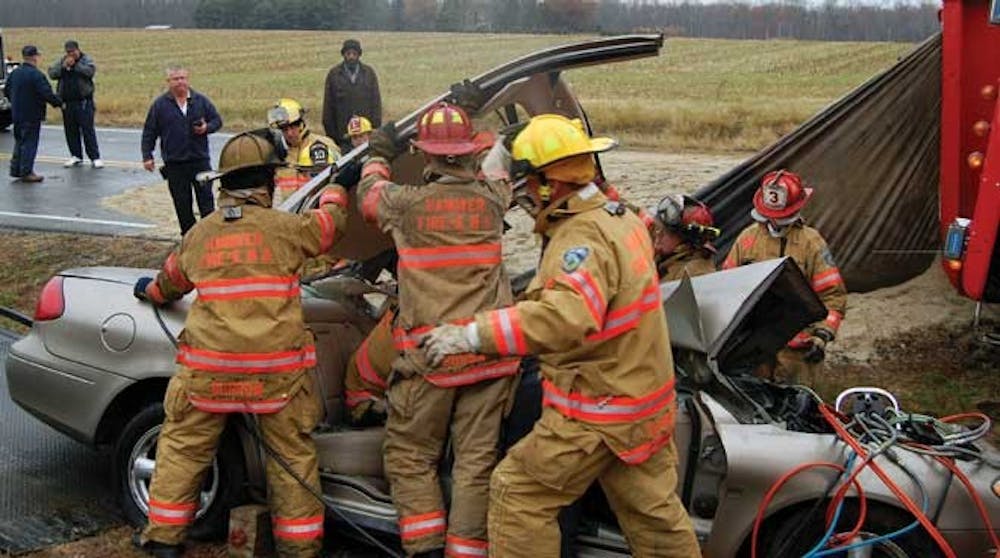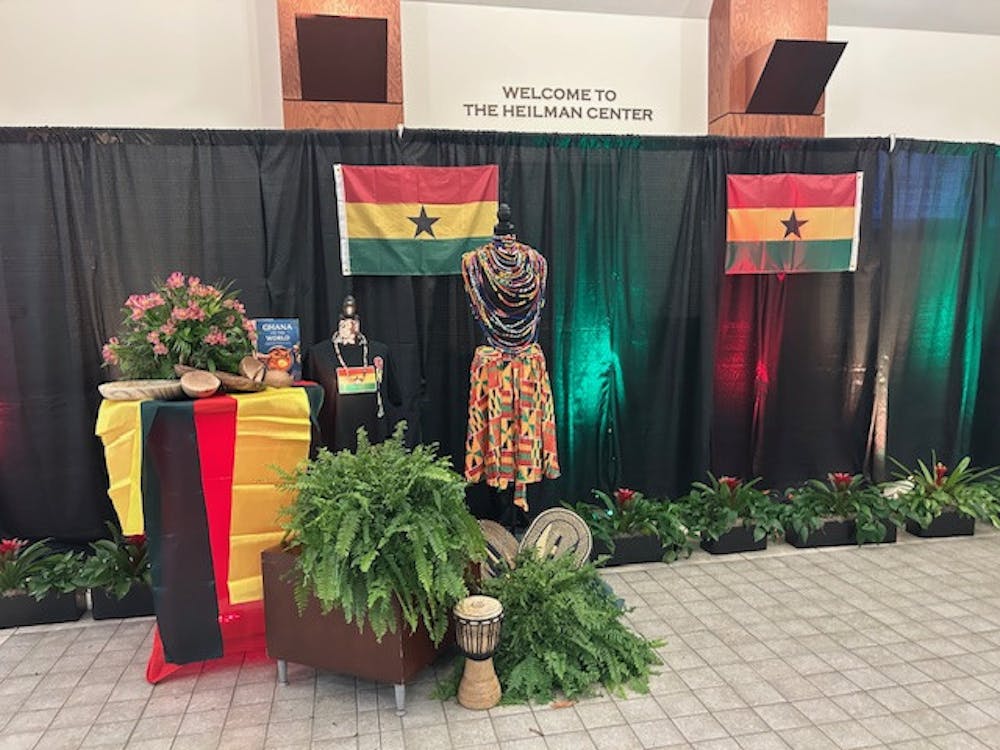Sitting in the back of an ambulance, racing down I-95 to the scene of a priority one motor vehicle accident, sirens blaring and clinging to the seat for dear life was one of the scariest moments of my life. My face was as white as a sheet, and I felt I was on the verge of passing out multiple times. But let's rewind and start at the beginning before we get to the good stuff.
After being assigned a story this week about University of Richmond Emergency Medical Service (UREMS), I was put in touch with Cris Leonard, who works at Hanover County Fire and EMS, and asked if I would like to write a story about the men at Station 10, offering a free ambulance ride in return. Knowing that this would be a great addition to my article, I jumped at the opportunity and agreed to go in from 6-10 p.m. on Saturday.
I arrived a little early and walked in as the men were preparing dinner (the biggest bowl of pasta I have ever seen) and was promptly offered a plate. They explained to me that it had been a quiet night thus far, so while waiting, everyone relaxed in personal reclining chairs and watched a television show about police officers while I started interviewing people.
Tim Harless said there were 15 career firefighters and 35 volunteers at that particular station. Stephen Fontaine later said that Station 10 was just one of a growing number of stations that housed both fire and EMS personnel. "We switch back and forth on a daily basis," he said. "We are cross trained to do all kinds of different things."
Harless was beginning to talk about everyone's specific duties when a series of loud bells sounded in the building, and everyone rushed out the door, leaving me sitting at the table alone, looking quite confused.
Harless quickly explained as we were running out the door, that we had just been called to the scene of a serious car accident, which made my heart stop slightly. He shuttled me into the back of the ambulance before I had time to register what was doing, and we sped out of the station, followed by two fire trucks.
I managed to slow my breathing by the time we got to the scene. But that all changed when I saw the red car about 20 feet from the shoulder of the highway, in a ditch, on its side, resting against a tree, the front part of the car completely smashed in. I was told to put on a vest and to stay in the ambulance until the scene had been assessed to make sure the car was not going to explode.
I was trying to sneak a peek out of the tiny window when the door was suddenly opened and I was greeted by the smiling face of one of the firefighters, motioning me over to where the driver was being secured to the stretcher, or back-boarded. He proceeded to explain everything that was going on. I was taken aback at how included I felt, even if I did not really know what was going on.
The driver, 32, had to be coaxed into going to the hospital, insisting that he was perfectly fine, but he was told that he had no choice in the matter. It was a miracle that he was able to protest, considering how bad the crash had been.
While the man was being transported to the Medical College of Virginia (MCV), Fontaine worked diligently and effectively, all the while keeping up a friendly conversation with the man, getting all of his information, and tending to his injuries, which turned out to be a headache and a scratch on his ankle. I was very impressed that he could put an IV in while the ambulance was speeding along the highway. Nevertheless, I had to look away; I hate needles.
Upon arriving at MCV, Fontaine ushered me in behind the stretcher and handed me the laptop containing all of the medical information, so it looked as though I actually belonged there. I took a deep breath and tried to wipe the petrified look off my face so I could play the part.
Once in the trauma unit, the man was encircled by five doctors, who cut off his clothes and checked his neck and spine for any pain. From the bed next to him, a man with an entirely burned leg looked at me sadly. When we were walking out, a child who had been hit by a car was being rushed in. I quickly averted my eyes.
Enjoy what you're reading?
Signup for our newsletter
After almost half an hour of paperwork (done on the computer), we were free to leave. I was a lot calmer on the ride to the station; listening to Fontaine sing along to Adele helped me relax. What struck me was that, one moment, they were making fun of each other at dinner, and the next they were working together to save a man's life. It was admirable to see such a switch.
Once back, Fontaine explained a little bit about the training: Initial classes take about six months, starting from the very basics, but "you train throughout your entire career," he said. Brooks Lusk, who drives a Quick Response Vehicle, which carries the same medical supplies as an ambulance but does not have room for a patient, said that it took about two years to become a paramedic and that it took longer for the EMS side of training than the fire side.
Fontaine said the men worked 24-hour shifts, and they had been at the station since six that morning. He said they worked about 10 days a month, but never had to work back to back without having a few days off. Even with the difficult schedule and stress, Fontaine said, "It is the best job in the world. I wouldn't do anything else."
Lusk agreed, saying "you see a whole different variety of calls, being in such a fast-paced environment. It is nice being able to communicate with different citizens and the hospital, and having a good relationship with them."
Conger Kennedy said he had been working at the station for the least amount of time, just over two years. He said he had had a friend that used to work at the station who had suggested that he go on a ride-along, Kennedy said he had been instantly hooked.
"It was a little disorientating, hearing all the radio traffic and not knowing what it meant," he said. "It was very exciting, even though I had no clue what was going on. Everyone knew what they were doing and were working as a team and I thought it looked like fun."
Kennedy said that there was a strong sense of community at the station and that there was always someone there to help you.
"If you get stuck, you have someone to fall back on," he said. "There is a lot to learn but it is reassuring to have people there who are more experienced to back you up. Everyone has their own motivations, but my biggest motivations are the guys that I work with."
Before leaving, they asked if I had been "bitten by the bug yet," if I would like to become an EMT myself. Since I cannot handle needles, blood, pain or anything of the sort, I am going to take a wild guess and say no, but the experience was amazing and I am so glad that I was given the chance to see what these courageous men do for a living. I would go back for another ride-along any day.
Contact Charlotte Brackett at charlotte.brackett@richmond.edu
Support independent student media
You can make a tax-deductible donation by clicking the button below, which takes you to our secure PayPal account. The page is set up to receive contributions in whatever amount you designate. We look forward to using the money we raise to further our mission of providing honest and accurate information to students, faculty, staff, alumni and others in the general public.
Donate Now



